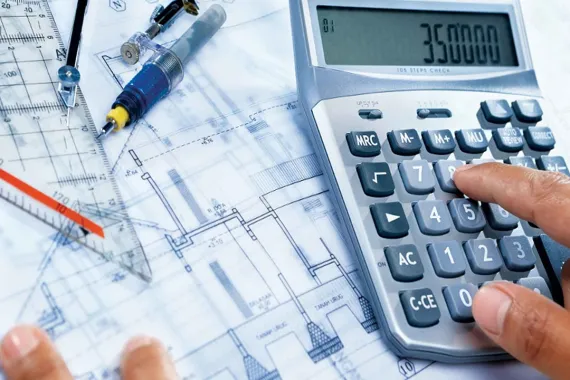
What are the main methods of building estimates?
Estimating is an important part of any business. Whether you’re looking to bid on a job or provide a quote for services, it’s essential that you have an accurate estimation service of the cost. In this article, we’ll discuss the five main methods of building an estimate and explore the pros and cons of each.
What is an estimate?
An estimate is a calculation of the likely cost of a project, based on past experience and current market conditions. It is used to provide an indication of the likely financial outlay for a project, and to help decision-makers decide whether or not to proceed with it.
There are several methods that can be used to build an estimate, including:
- Top-down estimating: This method involves starting with an overall figure for the project, and then breaking it down into smaller component parts. This is use when there is little data available about the project.
- Bottom-up estimating: This approach starts with estimating the cost of each individual component of the project, and then adding them all together to get the overall total. This method is often seen as more accurate than top-down estimation, as it takes into account more detailed information.
- Parametric estimating: This technique uses mathematical models to estimate the cost of a project, based on parameters such as size, complexity, and duration.
- Analogous estimating: In this method, the estimator looks at similar projects that have been carried out in the past, and uses these as a basis for their own calculations. This can be useful where there is little data available about the specific project estimate.

The 5 Main Methods of Building an Estimate
Building an estimate can be a daunting task, but understanding the five main methods of building an estimate can help make the process less overwhelming. The most common methods used to build an estimate are:
- Top-down estimating: This approach starts with high-level assumptions and breaks them down into smaller, more manageable pieces. For large projects with lots of moving parts, this is frequently were using.
- Bottom-up estimating: This approach starts with the smallest details and builds up to larger ones. For smaller projects where all the details are truly up front, this is frequently were using.
- Analogous estimation: This approach uses past projects that are similar in scope and size to estimate the current project. This is often used when there is not enough information about the current project to use either top-down or bottom-up estimation techniques.
- Parametric estimation: This approach uses mathematical models to estimate the cost or duration of a project based on certain parameters. This is use when there is all information about the project, but some uncertainty remains.
- Three-point estimation: This approach uses three estimates—best case, most likely case, and worst case—to account for uncertainty in the project. This is use when there is a high degree of uncertainty surrounding the project parameters.
Pros & Cons of Each Method
There are three main ways to build an estimate: bottom-up, top-down, and parametric. Each has its own advantages and disadvantages that you should consider before deciding which method is right for your project.
Bottom-Up:
Bottom-up estimating is the most detailed and accurate of the three methods. It involves breaking down the work into small tasks and estimating the time and resources required for each one. This method is best was using when there is a large amount of in-depth information about the project available. However, it can be time-consuming and may not be necessary for smaller projects.
Top-Down:
Top-down estimating is less detailed than bottom-up, but can be faster and more flexible. With this method, you start with a big-picture view of the project and then break it down into smaller pieces. This can be helpful when there is less information available about the project or when timelines are tight. However, it can also lead to inaccuracies if you don’t have a good understanding of all the work involved.
Parametric:
Parametric estimating uses historical data and mathematical relationships to estimate the cost or duration of a project. This method can be very accurate if you have good data to work with. However, because it does not account for scope changes or unforeseen circumstances, it should only serve as a starting point for your estimate.
Techniques for building an estimate
When creating a project estimate, there are numerous techniques to consider. A few of the most common and efficient methods include:
- Gathering input from all relevant parties: It’s crucial to consult everyone who will working on the project when developing an estimate. This includes those who will be doing the work, as well as those who will be overseeing the project. By getting everyone’s input, you can get a better understanding of the scope of work and what needs to be done.
- Breaking down the project into smaller tasks: Another effective technique is to break down the project into smaller tasks. This allows you to get a more accurate estimate of the time and resources required for each individual task. It also makes it easier to identify any potential problems or areas of concern.
- Creating a realistic timeline: An important part of creating an accurate estimate is creating a realistic timeline. This means taking into account all possible delays and disruptions that could occur during the course of the project. By being realistic about the timeline, you can avoid any surprises or issues later on.
- Get multiple bids: When possible, it is always helpful to get multiple bids from different contractors or vendors. This allows you to compare prices and services to find the best deal possible. Remember that the lowest bid is not always the best option, so make sure to consider all factors before making your decision.

Conclusion
Estimating can be difficult, but it is an essential part of project management. We’ve outlined the best methods for building a good estimate that will help you better understand how to budget your time and resources while working on projects. With the right approach and attention to detail, these estimation techniques can help ensure that you don’t miss any important details or go over budget with your next project. So take advantage of our advice and start putting together accurate estimates today.


